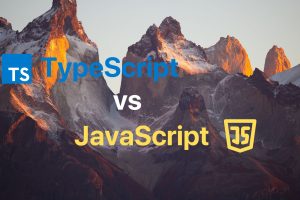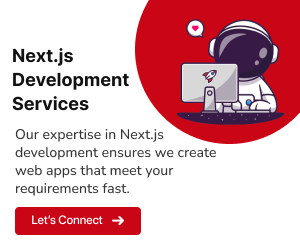Effective project management is critical for the success of any business or endeavor, and visualizing project timelines is a key aspect of this process. JavaScript Gantt chart components offer a powerful solution for project managers and developers to create interactive and visually appealing project timelines within their web applications. In this blog, we’ll explore the world of JavaScript Gantt chart components, highlighting their advantages and presenting the top 10 options to consider for your next project.
JavaScript (JS) and Its Advantages
JavaScript, the ubiquitous programming language of the web, is the backbone of countless interactive and dynamic applications. Here are five key advantages of JavaScript
Cross-Browser Compatibility:
JavaScript is supported by all major web browsers, ensuring that your code will run consistently across different platforms.Rich Ecosystem:
JavaScript boasts a vast ecosystem of libraries and frameworks, making it easier to build complex applications efficiently.Asynchronous Operations:
JavaScript’s asynchronous nature allows for non-blocking operations, enabling smooth user experiences and responsive applications.Interactivity:
With JavaScript, you can create dynamic and interactive web pages that respond to user actions, resulting in engaging and user-friendly interfaces.Community Support:
The extensive JavaScript community offers a wealth of resources, tutorials, and forums, making it accessible for developers of all skill levels.
Gantt Chart Components and Their Advantages
Gantt charts are invaluable tools for project management, providing a visual representation of project schedules and task dependencies. Using JavaScript to implement Gantt chart components offers several advantages
Dynamic Visualization:
JavaScript Gantt chart components allow you to create dynamic and interactive visual representations of project timelines, making it easier to track progress and manage tasks.Customization:
You can tailor the appearance and behavior of Gantt charts to match the specific requirements of your project, ensuring they integrate seamlessly with your application.Data Integration:
JavaScript Gantt charts can be easily integrated with data sources, databases, or APIs, providing real-time updates and synchronization.Cross-Platform Compatibility:
These components are compatible with various web frameworks and libraries, ensuring that you can use them in your preferred development environment.Improved Collaboration:
Gantt charts enhance project collaboration by offering a clear and shared view of project timelines and tasks, promoting better communication among team members.
Also Read: Top 12 JavaScript Concepts to Know Before Learning React
Top 10 JavaScript Gantt Chart Components
Gantt charts have long been a cornerstone of project management, aiding in the visualization of tasks, timelines, and dependencies. To empower project managers and developers, we present a curated list of the top 10 JavaScript Gantt chart components. These versatile tools offer dynamic visualizations, customization options, and seamless integration with web applications, enhancing project planning and execution. Below, we delve into each Gantt chart component, discuss how to incorporate it into your project, provide example code snippets, and highlight their pros and cons.
1. dhtmlxGantt
dhtmlxGantt is a versatile Gantt chart library known for its interactive and highly customizable features, making it an excellent choice for various project management scenarios. It offers an extensive set of tools for creating dynamic Gantt charts and project timelines.
To add dhtmlxGantt to your project, follow these steps:
- Download and include the library in your project.
- Initialize the Gantt chart within your HTML file.
- Define the tasks and dependencies using JavaScript.
Example Code Snippet:
gantt.init("gantt_container");Pros:
- Interactive task management.
- Rich feature set for project planning.
- Robust documentation and support.
Cons:
- Commercial license required for advanced features.
2. Syncfusion Gantt Chart
Syncfusion Gantt Chart offers an extensive feature set and seamless integration capabilities for your web applications. This component provides a comprehensive solution for creating and managing Gantt charts with ease.
To use Syncfusion Gantt Chart:
- Install the package using npm or include the script in your HTML.
- Create an instance of the Gantt chart component in your app.
Example Code Snippet:
var gantt = new ej.gantt.Gantt({});
gantt.appendTo("#Gantt");Pros:
- Extensive feature set.
- Comprehensive documentation.
- Frequent updates and support.
Cons:
- Commercial product with licensing fees.
3. jQuery Gantt
jQuery Gantt is a user-friendly, lightweight Gantt chart plugin designed for effortless project timeline creation. It is a suitable choice for smaller projects and straightforward Gantt chart requirements.
Example Code Snippet:
$(".gantt").gantt();Pros:
- Quick and easy setup.
- Ideal for small to medium-sized projects.
- Open-source and free.
Cons:
- Limited advanced features.
4. AnyGantt
AnyGantt is a feature-rich Gantt chart library offering interactive elements and a high degree of customization. It empowers you to create dynamic and engaging Gantt charts for project management.
To get started with AnyGantt:
- Include the AnyChart library in your project.
- Create a Gantt chart instance in your code.
Example Code Snippet:
anychart.onDocumentReady(function() {
var chart = anychart.ganttProject();
chart.container("container");Pros:
- Highly customizable.
- Supports various chart types.
- Extensive data visualization capabilities.
Cons:
- Commercial product with pricing tiers.
5. Frappe Gantt
Frappe Gantt focuses on simplicity and ease of use, making it an excellent choice for those who require straightforward Gantt chart functionality with a minimal learning curve.
To use Frappe Gantt:
- Include the library in your project.
- Create a Gantt chart with your task data.
Example Code Snippet:
var gantt = new Gantt("#gantt", tasks);Pros:
- Lightweight and open-source.
- Simple and user-friendly.
Cons:
- Limited customization options.
6. Angular Gantt Chart
Angular Gantt Chart is an Angular component that simplifies the integration of Gantt charts into Angular applications. It offers seamless integration within the Angular ecosystem.
To integrate Angular Gantt Chart:
- Install the package using npm.
- Include the library in your Angular module.
Example Code Snippet:
<gantt data="data"></gantt>Pros:
- Built for Angular applications.
- Supports real-time data updates.
Cons:
- Specific to Angular projects.
7. React-Gantt
React-Gantt is a React component designed for creating Gantt charts within React-based applications. It offers flexibility and ease of use for developers working in the React framework.
To include React-Gantt in your React app:
- Install the package using npm.
- Create a Gantt chart component in your application.
Example Code Snippet:
<ReactGantt tasks={tasks} viewMode={"Day"} />Pros:
- React-specific library.
- Easy integration with React projects.
Cons:
- Limited documentation and support.
8. Highcharts Gantt
Highcharts Gantt is part of the Highcharts library and provides a powerful and interactive Gantt chart solution. It offers a comprehensive range of features for advanced Gantt chart applications.
To use Highcharts Gantt:
- Include the Highcharts library and the Gantt module.
- Initialize the Gantt chart in your application.
Example Code Snippet:
Highcharts.ganttChart("container", options);Pros:
- Part of the Highcharts ecosystem.
- Well-documented and widely used.
Cons:
- Requires Highcharts license for commercial use.
9. Timeline.js
Timeline.js is a JavaScript library for creating interactive and customizable timelines. It is suitable for various timeline-based projects, offering flexibility and adaptability.
To use Timeline.js:
- Include the Timeline.js library in your HTML.
- Define your timeline data and configuration.
Example Code Snippet:
var timeline = new TL.Timeline('timeline-embed', url);Pros:
- Ideal for creating chronological timelines.
- Open-source and free.
Cons:
- Limited to chronological representations.
10. jsGanttImproved
jsGanttImproved is an open-source JavaScript Gantt chart library focused on simplicity and ease of use. It is a suitable choice for projects with basic Gantt chart requirements.
To use jsGanttImproved:
- Include the library in your project.
- Create a Gantt chart in your application with task data.
Example Code Snippet:
var gantt = new JSGantt.GanttChart('gantt_here', JSGantt.parseJSON(data));Pros:
- Simple and lightweight.
- Open-source and free.
Cons:
- Limited features and customization options.
Related: The Top 10 React chart libraries
Conclusion
JavaScript Gantt chart components are indispensable tools for project managers and developers seeking to create interactive and visually informative project timelines. With the advantages of JavaScript’s versatility and the rich ecosystem of Gantt chart libraries, you can choose the best component to seamlessly integrate with your web application, ensuring efficient project management and enhanced collaboration. By considering the top 10 options mentioned above, you can embark on your journey to more effective project planning and execution.


























